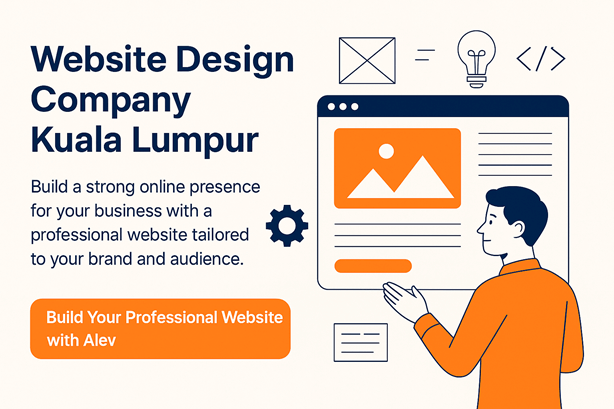Many emerging packaging trends are set to redefine how you approach brand design in the coming years. As sustainability, technology, and consumer preferences evolve, it’s necessary to stay ahead of the curve. This blog post will explore key developments that will influence your packaging strategies for 2025 and beyond, helping you create designs that resonate with your audience while standing out on the shelves. Embrace these trends to enhance your brand’s identity and ensure its relevance in a rapidly changing market.
The Sustainability Imperative: Eco-Friendly Packaging Revolution
Your brand’s packaging strategy significantly contributes to a more sustainable future, as consumers increasingly demand eco-friendly options. The shift towards sustainable practices includes embracing materials that minimize environmental impact, aligning with the growing consumer awareness of ecological issues. Companies proactively responding to these demands see not only an enhancement in reputation but also a potential boost in sales as sustainability becomes a key purchasing factor.
Biodegradable Materials and Their Impact
Biodegradable materials are transforming the packaging landscape, offering solutions that naturally decompose and reduce waste. By incorporating materials such as plant-based plastics or recycled paper, brands can significantly lessen their carbon footprint. Notably, according to a recent study, biodegradable packaging can cut down landfill waste by up to 30%, providing a tangible benefit to your brand while appealing to environmentally conscious consumers.
Consumer Demand for Sustainable Practices
Your customers are increasingly prioritizing brands that demonstrate a commitment to sustainability, making eco-friendly packaging a necessity rather than an option. A recent survey revealed that 72% of consumers prefer products with sustainable packaging, and nearly 50% are willing to pay more for such items. This growing demand reflects a shift in values, where consumers actively seek out brands that align with their environmental beliefs. Companies adopting sustainable practices not only resonate with their audience but also foster loyalty, positioning themselves as leaders in the market.
Intelligent Design: The Role of Smart Packaging in Brand Engagement
Smart packaging is revolutionizing how brands engage with consumers, allowing for an immersive experience that extends beyond the product itself. By integrating technology directly into packaging, you can leverage interactive features that capture attention and foster loyalty. This innovative approach enhances brand storytelling, making packaging not just a vessel for products but a medium for connection that resonates with your audience.
Connectivity and Consumer Experience
With the rise of smart packaging, connectivity becomes a fundamental aspect of consumer experience. You can create a seamless interface between your product and consumers through technologies like NFC and RFID. This connectivity allows for real-time feedback, personalized content delivery, and enhanced customer service, ultimately enriching the way consumers interact with your brand post-purchase.
Innovations in QR Codes and Augmented Reality
QR codes and augmented reality are increasingly important tools in smart packaging. These technologies offer you a gateway to engage consumers in unique ways, making the packaging itself an interactive experience. With just a scan, customers gain access to exclusive content, tutorials, or promotions, creating a memorable encounter that can significantly influence their brand perception.
Innovations in QR codes are pushing boundaries further, with dynamic codes that can change content over time, adapting to different campaigns or product launches. Augmented reality enhances the experience by overlaying digital elements onto the physical world, allowing consumers to visualize product benefits or immerse themselves in interactive storytelling. Brands like Pepsi and Coca-Cola have experimented with AR elements, offering engaging games and experiences that not only entertain but also educate consumers about their products. As you integrate these technologies, ensure your content is visually appealing and relevant, making every interaction impactful and delightfully memorable.
Aesthetic Evolution: The New Era of Visual Storytelling
A brand’s visual identity is no longer limited to logos and color palettes; it’s evolving into a comprehensive storytelling tool. The aesthetic appeal of packaging is becoming paramount as consumers gravitate towards brands that offer an experience rather than just a product. Your design choices now play a pivotal role in conveying your brand’s narrative, establishing emotional connections, and differentiating yourself in a saturated market. This shift towards visual storytelling is reshaping how consumers perceive and interact with your brand, making it vital to stay ahead of aesthetic trends.
Minimalism vs. Maximalism in Brand Presentation
The debate between minimalism and maximalism continues to influence brand presentation decisions. Minimalistic designs favor clean lines, ample white space, and a focus on vital details, often resulting in elegance and sophistication. Conversely, maximalist approaches employ vibrant colors, intricate patterns, and bold typography, offering a sense of exuberance and creativity. Choosing between these styles necessitates understanding your target audience and what resonates best with them, as both can convey distinct brand messages.
Unique Textures and Finishes that Capture Attention
Integrating unique textures and finishes into your packaging can significantly elevate its appeal and engagement. Textured surfaces like soft-touch coatings or embossed elements invite customers to interact physically, providing an additional layer of sensory experience. Research indicates that tactile experiences can heighten brand perception and influence purchase decisions, making it imperative to explore innovative materials and finishes that stand out on the shelf.
For example, using a matte finish can create an air of sophistication, while metallic accents can add a touch of luxury. Brands like Absolut Vodka leverage these design elements by incorporating frosted glass that not only looks premium but also feels unique in hand. Recent studies show that products with sensory-enhanced packaging experience a 20% higher recall rate among consumers. By investing in unique textures and finishes, your brand can create memorable, tactile experiences that resonate long after purchase, setting you apart in a competitive landscape.
The Global Market Shift: Cultural Influences on Packaging Design
Shifts in global markets significantly impact packaging design, dictated by various cultural influences that shape consumer behavior. Brands are now more aware of the importance of localization, taking cultural nuances into account to create designs that resonate with specific regions. Understanding these cultural dimensions is vital for building authentic connections with customers. For insights into emerging trends, check out the 2025 Packaging Trends.
Regional Aesthetics and Their Appeal
Each region boasts unique aesthetics that can evoke strong emotional connections to packaging. For instance, vibrant colors and intricate patterns are favored in Latin American cultures, while minimalistic and elegant designs resonate in Nordic countries. Brands tapping into these regional preferences can increase their market appeal, ensuring their packaging stands out on crowded shelves.
The Influence of Global Trends on Local Markets
Global design trends often trickle down into local markets, influencing consumer expectations and preferences. A style that gains traction internationally, like sustainable and eco-friendly materials, may quickly become a baseline requirement for consumers in various regions. Adapting these global trends while retaining local cultural relevance can enhance brand loyalty and recognition.
For example, the rise of eco-conscious packaging has reached far beyond its origin in developed countries, impacting brand strategies worldwide. Markets in Asia and Africa are increasingly prioritizing sustainability, often demanding biodegradable materials. Brands that adopt these global standards while customizing their approach to local cultures—like incorporating traditional art into eco-friendly packaging—can effectively balance international influence with regional identity, resulting in a more compelling product offering.
The Future of E-Commerce: Packaging Solutions for Digital First Brands
The rapid rise of digital-first brands means packaging solutions must evolve to cater to online shopping experiences. As consumers increasingly expect prompt delivery and aesthetically pleasing products, brand packaging must balance sustainability with eye-catching design to stand out during the unboxing process. The right packaging can enhance brand perception, drive customer loyalty, and ultimately affect sales performance in an ever-expanding digital marketplace.
Unboxing Experiences that Drive Loyalty
A memorable unboxing experience can turn first-time buyers into loyal customers. Brands are focusing on sensory elements such as textures, visuals, and even scents to create a delightful experience when customers receive their orders. Incorporating special touches, like branded tissue paper or personalized thank-you notes, not only enhances the moment but encourages customers to share their experiences on social media, increasing your brand visibility.
Packaging Functionality in a Subscription Economy
Subscription services demand functional, adaptable packaging that meets evolving consumer needs. As brands shift towards subscriptions, it’s necessary that packaging not only protects products but also allows for easy access and repeated use. Consider innovative designs that simplify the unboxing process while ensuring products remain secure during transit, enhancing the overall customer experience.
Brands such as Dollar Shave Club and Birchbox have shown that effective packaging can lead to higher customer retention rates. For instance, Dollar Shave Club’s cleverly designed boxes often serve dual purposes, providing not only shipment security but also storage solutions for customers. This functionality bolsters brand loyalty and encourages additional subscriptions, as customers appreciate convenience alongside premium product offerings. As the subscription economy grows, prioritizing packaging that adapts to consumer lifestyles will be pivotal for sustaining brand success.
To wrap up
To wrap up, staying ahead of packaging trends for 2025 will empower you to enhance your brand’s visual identity and consumer connection. By embracing sustainability, innovative materials, personalized designs, and smart technology integration, you can align your brand with evolving consumer preferences. Understanding these trends will not only keep your products relevant but also position your brand as a leader in the marketplace. Keep an eye on these developments to ensure your packaging resonates with your target audience and drives your brand’s success in the years to come.






